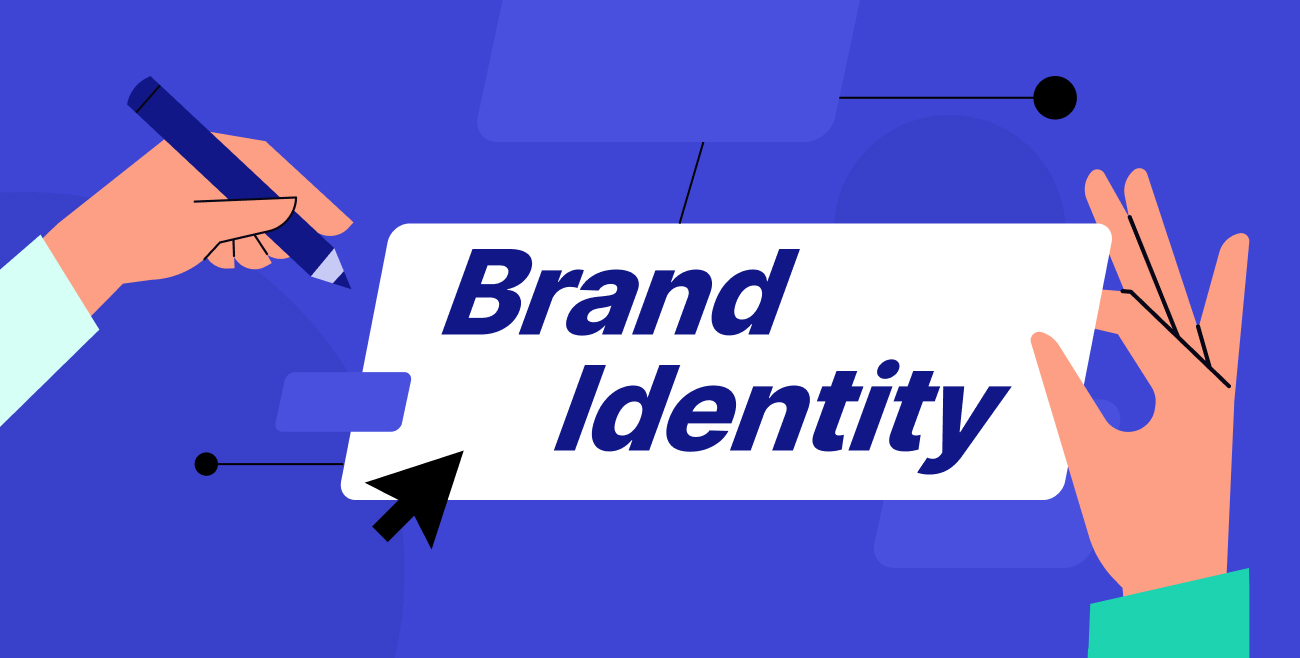
Table of Contents
Your NEMT business thrives on trust, and trust begins with a solid brand identity. How can you make your brand the one clients turn to in a crowded market?
It’s simpler than you think—if you know what to focus on. Let’s explore.
What’s in an NEMT brand identity?
In the NEMT industry, brand identity reflects your reliability, professionalism, and the level of care you provide to your passengers.
It’s the entire experience clients associate with your company, from the moment they book a ride to when they’re safely dropped off.
Think of it like this: when people see your company’s name, what do they feel? Do they trust you to arrive on time? Do they believe their loved ones are in good hands? That’s your brand identity working at its core.
It’s not just the visual elements—the colors on your vehicles or the design of your website—but every interaction that builds a perception. How your drivers communicate with passengers, the safety of your vehicles and the ease of scheduling services are all elements that combine to form your brand identity.
Do More with Less
Handle more trips with fewer dispatchers on your payroll with Tobi.
Request a DemoCore Components of a Solid NEMT Brand Identity
If consistency is the glue, trust and professionalism are the foundations for your brand identity.
In an industry like NEMT, where customers often have all sorts of vulnerabilities, trust is everything.
Consistency Across Touchpoints
Say you’re running a business, and your customers encounter your brand in several places—on your website, through your vehicles, from the uniforms your drivers wear.
If all these things don’t look or feel connected, it’s like meeting a different version of someone whenever you talk to them. Confusing, right? That’s why consistent branding is vital.
Whether someone lands on your website, sees your vehicles on the street, or interacts with your drivers, they should get a sense of professionalism, trust, and reliability.
Trust and Professionalism
NEMT clients, whether they’re seniors or people needing medical attention, rely on you.
It’s their health and safety on the line. They’ve got to believe in you. And trust isn’t something you can demand—it’s earned through every small interaction.
Take the appearance of your vehicles, for example. Clean, branded vehicles are statements of reliability. A professional driver in a clean uniform sends the message that your company cares.” And let’s not forget the condition of your equipment. Well-maintained lifts and vehicles speak volumes about attention to detail, building that invisible but essential trust between you and your clients.
Clear and Relatable Messaging
Now, if we’re talking messaging, this is where it gets personal.
How will you feel if you read or hear something that’s meant for you and speaks to your needs?
That’s how your messaging should feel to your customers. They need to know you understand their safety, timeliness, and comfort concerns. Your words should say, “We get you.”
But there’s more. Empathy. In the NEMT industry, you’re dealing with people who might be stressed or anxious about their health. So, when your brand’s voice is understanding and empathetic, it reassures them.
Visual Identity
A brand’s visual identity is like its outfit—how you present yourself to the world.
Be diligent in choosing your logo, color scheme, and vehicle branding. These are symbols of how your clients remember you. A clean, professional look communicates reliability, while your chosen colors can evoke emotions. Blues, for instance, feel calm and trustworthy; bold colors might express energy and speed.
When your vehicles are out there, branded and looking sharp, they’re like mobile billboards for your company.
Customer-Centric Values
Here’s where it all comes together.
You can have the flashiest branding, the sharpest logo, and the cleanest vehicles, but if you’re not aligned with what your customers care about, none of that matters. Clients in the NEMT world care about getting where they need to go safely, on time, and with as little hassle as possible.
So, your brand identity should scream, “We understand.” Is your booking system easy to use? Are you on time? Is accessibility built into your service? These are the questions that matter. And if your brand doesn’t communicate that you’ve got this handled, well, it’s time to rethink the message.
How Reputation Shapes Your Brand Identity
Your reputation is what people think about you. It’s what they say about you to others and the world. Your reputation can make or break how your brand is perceived.
Word of Mouth and Online Reviews
Word of mouth spreads like wildfire and can light up your brand positively or burn it down.
Clients who have a good experience with your service will talk about it. Maybe they’ll mention how professional your drivers were, how clean your vehicles looked, or how reliable your service was when it mattered most. This kind of organic feedback can skyrocket your brand’s credibility.
Now, flip the coin—negative experiences will spread even faster. A bad review about a missed pickup, unprofessional behavior, or even a dirty vehicle can hurt your reputation.
And with today’s digital world, online reviews are like permanent markers. Once a bad review is out there, it can linger and influence potential clients’ decisions.
Consistency is Key to Strengthening the Brand
Consistently delivering excellent service is the secret sauce to building a positive reputation.
If you have excellent service one day but are unreliable the next, that inconsistency breeds doubt and weakens trust. Clients need to know they can count on you every single time.
Delivering the same high-quality service strengthens your brand’s identity. It shows that you’re dependable, and in an industry like NEMT, that reliability becomes part of your reputation.
How Openness Builds Client Confidence
Transparency is like opening the curtains and letting the light in—it shows your clients that you’ve got nothing to hide. Being upfront about your services, pricing, and policies is wise, mainly in healthcare-related business.
Open Communication About Pricing, Services, and Policies
If pricing is unclear or if there are hidden fees, it creates a sense of uncertainty, and uncertainty is the enemy of trust.
Conversely, clients know what to expect when you clearly outline your prices, services, and policies (like cancellation or booking procedures). There are no surprises, and that level of transparency reassures them that your business is honest and reliable.
The Role of Customer Feedback in Refining the Brand Identity
When clients share their experiences—good or bad—they give insight into how your brand is perceived.
By listening to that feedback and making adjustments, you refine your brand identity to better align with client expectations.
For example, if multiple clients mention that your booking system is confusing, that’s a signal to simplify it. Once you address their concerns, you improve the experience and show clients that their opinions matter, strengthening the trust and transparency you’ve built.
Creating a Personalized Connection with Your Clients
Clients—like older adults or people with disabilities—appreciate when a service feels made just for them.
Offering a Personalized Experience to Customers with Varied Needs
Consider a client requiring special accommodations, like a wheelchair-accessible vehicle or extra care during transportation.
When your service is customized to meet their needs, your brand goes beyond the standard and genuinely focuses on individual care.
Providing options for different client needs, whether senior care, special equipment, or additional assistance, transforms a one-size-fits-all service into something much more thoughtful and client-centric.
How a Strong Brand Identity Is Adaptable to Individual Customer Preferences
A brand identity shouldn’t be rigid.
Some of the strongest brands are the ones that can evolve to meet each client’s preferences.
For example, some clients prefer using an app to book rides, while others may need phone assistance due to mobility challenges or lack of tech knowledge. A brand that adapts to these preferences shows flexibility and an understanding of diverse client needs, strengthening the overall brand identity.
Flexibility is critical to making sure every customer feels like your service was designed with them in mind.
Innovation and Modernization
Standing still is not an option. Clients expect convenience and efficiency, so adopting modern technology is essential to maintaining a competitive edge.
Incorporating Technology Strengthens the Brand
Incorporating technology—like apps, GPS tracking, and online booking—does more than smooth your operations.
It changes how clients perceive your brand. For example, offering an app for easy ride bookings gives clients the convenience of scheduling at their fingertips.
They don’t have to deal with no-calls or outdated systems, which means they associate your service with efficiency and modernity. GPS tracking adds an extra layer of trust because clients (and their families) can track rides in real time, providing peace of mind that their transportation is safe and on schedule.
Maintaining and Evolving Brand Identity
Building a solid brand identity is great, but maintaining and evolving that identity keeps it alive and relevant.
Consistently Review and Refresh Brand Identity
Think of your brand as a living thing.
If you stop nurturing it, it withers. Periodic reviews of your brand identity help you spot where things might get stale or where new opportunities lie. This doesn’t mean changing anything at once but rather keeping an eye on how your brand is perceived.
Ask yourself:
- Are our visuals still modern?
- Does our messaging align with today’s client expectations?
- Are we addressing new concerns in the NEMT space, like emerging health protocols or digital booking trends?
A brand refresh could be subtle, like tweaking your logo or updating your website to make it more user-friendly. Or it might involve shifting your messaging to reflect new priorities, like focusing on innovation, sustainability, or inclusivity.
Staying in Tune with Industry Trends and Customer Expectations
Staying in tune with what’s happening—advancements in modern transportation technology, new safety standards, or changing client demographics—ensures your brand remains relevant.
For example, a shift toward more tech-enabled services, like telehealth integration or automated scheduling, could become a client expectation. If you’re slow to adapt, your competitors will step in to meet those needs, leaving your brand behind.
Beyond industry trends, it’s crucial to understand what your clients expect as time goes on. Today’s clients might need easy booking and transparent pricing, but tomorrow’s clients might have more flexible services, like on-demand rides or integrated health monitoring during transport.
If your brand identity doesn’t evolve to meet changing expectations, it risks being seen as outdated or out of touch.
Following Directions for Success
In a competitive industry like NEMT, building a solid brand identity is essential to standing out and gaining trust.
Operators can set themselves apart by focusing on exceptional service, clear communication, and consistent branding.
Tools like Tobi’s NEMT software can further enhance efficiency, ensuring that your brand’s promise of reliability is consistently delivered.
Are you curious how Tobi can help you run your NEMT operations more efficiently? Request a demo for a free 30-day trial and experience how Tobi makes your business better at every turn.




